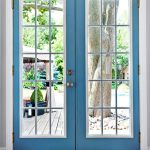Did you realise that switching to LED bulbs for your home’s illumination might have a major influence on your monthly energy bill? Being a cutting-edge innovation, LEDs have completely altered the lighting industry. It’s a certain that this kind of illumination will become the norm in the coming digital age. More and more places are switching to LED lighting, both inside and out.
They have a competitive edge over other species due to their capacity to save energy and survive for much longer than average. Many still prefer LED lights, especially for residential applications, even now.
Why, therefore, have so many households started using LED bulbs for their interior lighting? Read on to learn how to change the ball’s appearance dramatically with only one light-emitting diode bulb.
Purpose of LEDs
Light-emitting diode is the abbreviation for LED. The process by which this kind of semiconductor device generates light is known by its scientific name, electroluminescence. Go for the mod lighting reviews there. Light of a visible spectrum is emitted when an electric current is passed through it. Lighting from an LED is up to 90% more efficient than that from an incandescent bulb. There’s a wide selection of bulbs that may be used with any system, use much less power, and last far longer than standard incandescents.
How Interior Lighting Using LEDs Works
For the better part of a decade, LED technology has been the standard in the lighting industry. Several folks now think it’s your greatest bet for any useful lighting projects you may have in mind. This is especially true for interior consumption, which often accounts for a large percentage of a building’s overall floor area.
Within buildings, LED lighting has several benefits over older lighting technologies. In addition to its inherent efficiency, it also generates higher-quality illumination. A large number of locals, property owners, and management staff can testify to this. For many crucial reasons, this is the case.
The Perks of Using LED Lights Within a Home
These are some of the potential benefits of installing LED lighting indoors:
Less energy use is good for the planet. Already mentioned is that LEDs are around 90% more efficient in producing light. This means that their output is light rather than heat. Traditional incandescent lamps just can’t do this. Their energy is mostly converted into heat rather than light. Because of its ineffectiveness, this heat is transformed into a kind of wasted energy. LED lighting uses 25% to 30% less energy than halogen incandescent lighting and lasts 8-25 times longer. Not only will you save on initial costs associated with replacement, but also on ongoing costs in the form of your monthly energy bill. That may not seem like much now, but it might have a major effect in the long run. Cutting down on energy use is one more thing you can do to help keep the natural world intact.
Increased longevity
Always being on the lookout for new light bulbs to replace those that have burned out might be annoying. Incandescent bulbs, which have a lifespan of just approximately 1,000 hours on average, often fail before their time. But, if you switch to LEDs, you won’t have to change the bulbs nearly as frequently. Average longevity is rated at 25,000 hours, with certain models rated for up to 50,000.










